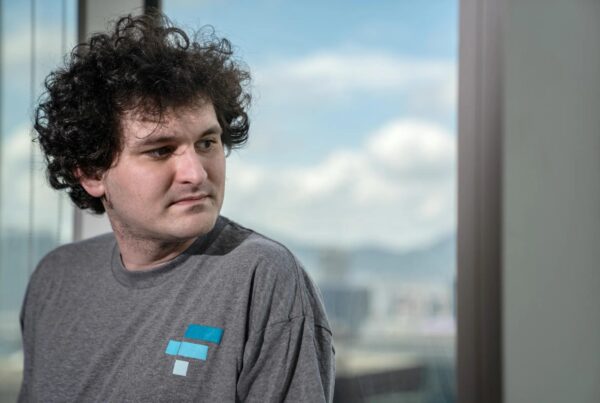Omni seller it usually refers to omnichannel seller, namely a seller who uses multiple channels or sales channels simultaneously, but all are well integrated. So it's not just about opening stores in many places, but all those channels are connected, synchronized, and consistent.
The main characteristic of an omni seller is having connected multi-channels., Sellers will be present on marketplaces such as Tokopedia, Shopee, Lazada, then on social media platforms Instagram and TikTok, the store's own website, and even offline stores. All of these channels are connected to the system, so stock levels, prices, and promotions are recorded consistently.
A consistent customer experience, for example, you see a product on Instagram, then click through to the website, then check out on the marketplace—the experience is the same—from price, promotions, to service. Omni technology integration: sellers use tools/software for inventory management, orders, customer service, and payments. So, if one item is sold on Shopee, stock on Tokopedia automatically decreases as well.
Be more focused on the customer journey; Omni seller thinks about how consumers want to shop in any way, and is made as easy as possible. You can choose to order online for in-store pickup (Click & Collect), or buy offline and have it delivered to your home.
The difference with regular multi-channel
Multi-channel seller, selling on many platforms, but going their own separate ways. Stock, price, and customer data don't align.
Omni seller is present on all platforms and connected, so that consumers can have a seamless experience without confusion.
Real-world example omni seller:
A fashion brand that has an offline store, an Instagram Shop account, an official store on Shopee, its own website, and all of them are in sync.
An example of Starbucks coffee: you can order via the app, pick it up at the store, pay with an e-wallet, and still earn loyalty points.
So, if you sell online, the step up from merely multi-channel to omni seller It is to make all channels integrated and consistent, so that consumers feel comfortable shopping anywhere.
Example Omni Seller for Culinary SMEs
Let us provide an example of a bakso stall business transaction simulation. Its name is Chicken Meatball Bowl, the main product is ready-to-eat frozen meatballs, and the target customers are young people, families, and office workers.
Sales channel used by offline stores Chicken Meatball Bowl Stall, Customers can dine in or take away. Then the online store website has a menu, prices, and online orders are directly connected to the cashier and inventory systems. It was also sold on marketplaces such as Shopee, Tokopedia, and Lazada, for the sale of frozen meatballs with a shipping promo. Continue on the Instagram and TikTok Shop social media, containing recipe content, short videos, and you can check out directly via IG Shop / TikTok Shop. Then there is WhatsApp Business as well; customers can quickly place orders through an automated system and stock updates.
System Integration
All orders, whether from Shopee, IG, or offline warung, go into one dashboard.
Stock is automatically updated; for example, if 5 packs of frozen meatballs are sold on Shopee, the stock on Tokopedia and the website also decreases.
Uniform promotion, for example the promo "Buy 2 Get Sambal Free", applies across all channels.
Integrated payments, you can pay via e-wallet, bank transfer, or COD, but all are recorded in a single system.
Consumer Shopping Experience
Scenario A: Rina watched Instagram Reels of the recipe "Bakso Mozarella", she clicked the Shop on IG and then ordered on Shopee, and the goods were shipped.
Scenario B: Budi eats directly at the Chicken Meatball Bowl Stall, he likes to scan the QR at the table, then follow IG and next week order frozen meatballs via Tokopedia.
Scenario C: Summary of the message via WhatsApp, then choose take immediately, click and collect, then pay at the cashier of Warung Bakso Mangkuk Ayam.
All experiences feel connected, even though the way you shop is different.
Advantages of Being an Omni Seller
Broader sales through offline, online, and marketplace channels.
Customers are comfortable and loyal because of a consistent experience.
Customer data is neatly collected and can be used for personalized promotions, such as birthday discounts, and recommendations for favorite menu items.
A brand is more trusted because it looks professional.
Omnichannel seller It's not the name of a single company, but more like sales strategy that is used by the brand/seller. Well, to run this system, there are usually platform/software technology providers that help SMEs as well as large brands connect all channels.
The party that builds Omnichannel Seller
Large Retail & Brand Company, for example Uniqlo, Starbucks, Nike, or MAP in Indonesia. They built their own omnichannel system from apps, offline stores, to marketplaces.
Startup / Omnichannel Platform Provider
This is the company that makes software for integrating channels, inventory, and orders, namely Jubelio in Indonesia, widely used by SMEs and local brands for marketplace, POS, and website integration.
Sirclo In Indonesia, helping businesses own an online store and be integrated into a marketplace.
HashMicro regional, providing ERP system and omnichannel for retail.
Shopify + marketplace integration Global networks are widely used by direct-to-consumer brands.
Big Marketplace & Platform
They are also developing the ecosystem. omnichannel so that the seller can easily synchronize, namely Tokopedia The GoTo ecosystem has a feature “Mitra Tokopedia” and POS integration, then there is Shopee through ShopeeFood, Shopee Mall, and Shopee POS.
Next, there is TikTok Shop that provides integration services with social content and direct checkout.
Examples of Omnichannel Seller Activities in Indonesia
Bakmi GM You can order via the app, website, GoFood/GrabFood, Tokopedia, even when dining in at the restaurant; all promos and prices are consistent.
Jubelio, many fashion SMEs, F&B, even electronics use Jubelio to turn into omni seller because it can synchronize with Shopee, Tokopedia, IG Shop, etc.
MAP Club Group: Zara, Starbucks, Sport Station, have a membership app, offline-online shopping integration, loyalty points connect everywhere.
So, the channels can be various marketplaces, the store's own website, a social media shop, offline store, up to the brand's app.
Whereas a company that builds an omnichannel seller is usually. big brand make it yourself. SMEs & mid-size Use the help of local/global startups/platforms.
To conduct sales using this Omnichannel Seller system, it can be done by business actors in the following way:
- Small SMEs – culinary/retail use the service from Olsera or Sirclo.
- Medium-sized SMEs – fashion, electronics, lifestyle use the service Jubelio more complete for the integration of Indonesian marketplaces.
- big brand / enterprise use the service HashMicro for local or Magento for global.
- Want to export/global market Use the service. Shopify.
Discover more from Insimen
Subscribe to get the latest posts sent to your email.










